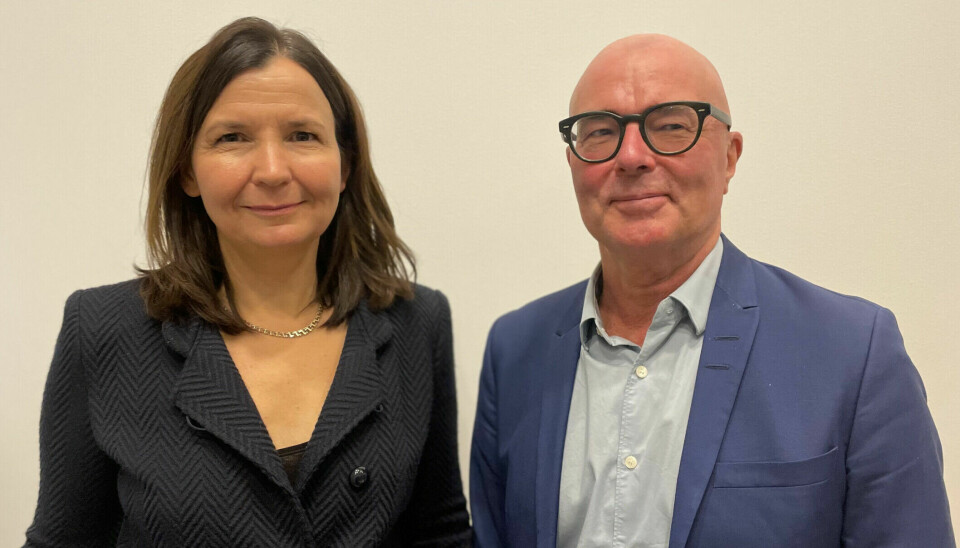
Poverty is inherited, but researchers believe they know how to break the cycle
The proportion of children living in poverty in Norway could be halved right now by increasing the child benefit. For long-term impact, however, researchers assert that a different approach is most effective.
The economic disparities in Norway are on the rise. Many families with children are struggling to make ends meet. Children bear the brunt of this.
Today, well over 11 per cent of children grow up in low-income families compared to just over 3 per cent in 2001.
Norwegian authorities established an expert group to help reverse this negative development. The group recently submitted intervention proposals (link in Norwegian).
Halving child poverty is possible
The committee has concluded that the best and most effective measure to reduce child poverty is to significantly increase the child benefit. But the child benefit, as it exists today, is very expensive. It also provides limited financial support to the poorest families.
The expert group therefore proposes to tax the child benefit as if it were income. This would mean the wealthiest would pay more in taxes, and families with lower incomes would see a substantial increase in income.
Committee
members have calculated that the proportion of children living in poverty in
Norway could be halved this way.
Uncertain about long-term effect
Research shows that an increase in the child benefit would have a short-term effect on children's quality of life. Its effect in the long term is less certain.
However, research clearly indicates that another measure proposed by the committee would have a significant effect over time. That would be to increase the number of children attending kindergarten.
“The most effective strategy to break generational poverty is for more children to go to kindergarten,” Kjell Gunnar Salvanes said during the Kåkånomics economics festival.
There is substantial international research supporting this, especially from Norway, according to the professor at the Norwegian School of Economics. He was one of the members of the expert committee.
At Kåkånomics, Salvanes and Mari Rege discussed the knowledge base for the committee's work. Rege is a professor of economics at the University of Stavanger and led the expert group.
New model for kindergarten admissions
The committee suggests implementing a new model for kindergarten admissions.
The proposal would give all children the right to kindergarten from the month the child turns one year old.
The offer of a place must come automatically, and everyone would be entitled to free core time in kindergarten.
The committee recommends that the new model be introduced gradually, both to ensure adequate staff in the kindergartens and because the new model is costly.
Kindergarten reduces inequality
Henrik Zachrisson is a professor at the University of Oslo and has also been on the expert committee.
He has done a lot of research on kindergartens and social inequality, and has no doubt that the proposed new model could help break the cycle of poverty if implemented.
Zachrisson and colleagues used the expansion of kindergartens for one- and two-year-olds in the 2000s as a natural experiment. During this time, kindergarten coverage for this age group increased from 30 to 80 per cent in just a few years.
The researchers found that the children who started kindergarten before they were 18 months old had better language development as three-year-olds than those who did not attend kindergarten.
The social inequality between children from families with education disparities was also greatly reduced.
National tests in 5th grade showed up to a 50 per cent reduction in social inequality.
Higher wages and more education
The researchers have found the same type of effect in school screening tests in other Norwegian studies, including data from Oslo. Kindergarten effectively levelled social differences.

Long-term studies in Norway going back to the end of the 1970s are also available, according to Zachrisson.
These studies show that those who started in kindergartens then earned slightly higher wages, had more education, and were more closely connected to the workforce than those who did not attend kindergarten, he explains.
Why does kindergarten matter so much?
These studies unfortunately cannot tell us much about what exactly produces this effect. Zachrisson does not believe that school-oriented learning in kindergarten is the reason for the reduction in differences between children.
He says the pedagogy in Norwegian kindergartens has always been deeply rooted in a tradition of play.
"Particularly for the youngest children, we believe it's more about the learning that occurs when they interact with their peers and engage in play guided by adults," he says.
Play must be adapted to children's age
The researchers believe this lays the foundation for better learning when children start school.
“At the same time, we know that play-based, structured educational programming for the oldest kindergarten children has a positive effect. It’s important that the learning experiences children have in kindergarten are age-appropriate. Two-year-olds and five-year-olds play and learn in different ways,” Zachrisson says.
Research from other countries suggests that kindergarten can help children learn to focus their thoughts and attention, solve problems together with others, and cultivate curiosity, he explains.
Big difference between kindergarten children
Which children do and do not attend kindergarten in Norway reveals stark social differences. This is especially true for the youngest children.
Only 60 per cent of one- and two-year-olds in low-income families attend kindergarten, compared with 90 per cent of other families with children.
For three- to five-year-olds in low-income households, the number is 93 per cent, compared to 99 per cent in other families with children.
“We can point to several reasons for that, with the cash-for-care subsidy being one of them,” Rege says.
The committee is therefore proposing to remove this benefit.
Complicated application process
The expert committee proposes that the offer of a kindergarten place should be automatic. Zachrisson notes no one has researched the effect of direct enrolment in kindergarten, but he has confidence in the proposal.
“We know that a lot of people find the application process complicated. Research has shown that the more complicated it is to apply for something, the fewer people will follow through with the process,” he says.
“People who earn less, lack language skills, and have little knowledge of the process are the least likely to make use of an application-based public programme."
Culture and trust
Most of Norway’s rise in child poverty in the last 20 years can be explained by increased immigration, according to the researchers.
Zachrisson believes that culture and trust could factor into why children with an immigrant background are less likely to attend kindergarten.
Most viewed
Many immigrants are sceptical about kindergarten. They have less trust in the public system, and the idea of a public Norwegian kindergarten is foreign to them.
Lack of information could also play a role.
Adapting
automatic enrolment to the large language groups might be a good idea, to make
the information more accessible, Zachrisson believes.
Live under constant stress and worry
In their report, the researchers delved into both Norwegian and international studies to understand why poverty is inherited and what can be done about it.
One explanation is that low-income families live under constant stress and worry about how they will pay their next bill or where they will live next year.
This anxiety affects their living conditions and makes it more difficult for parents to follow up their children in the same way as parents with a more dependable financial situation are able to do.
How poverty is inherited
The researchers point out that many children who grow up in families with persistently low incomes are fine.
However, on average, these children have more difficult formative environments than other children. They participate less in leisure activities, have poorer relationships with their peers and teachers, and they struggle more with schoolwork.
Children from low-income households are also much less likely to complete upper secondary school or to be employed as adults.
In addition, they have a greater risk of poorer mental and physical health in life.
“This is how poverty is inherited,” Rege says.
Testing multiple interventions
The causes of poverty are complex and varied.
Therefore, the expert group believes that many measures are needed. Their report also includes measures to include more children in leisure activities and for family coordinators to follow up the families closely. This was recently tried in a project in Southern Norway, as reported by sciencenorway.no.
However, the researchers emphasise that the strongest evidence lies in the effects of attending kindergarten.
———
Translated by Ingrid P. Nuse
Read the Norwegian version of this article at forskning.no
Reference:
Norwegian Government: En barndom for livet (A childhood for life), report, 2023.






































